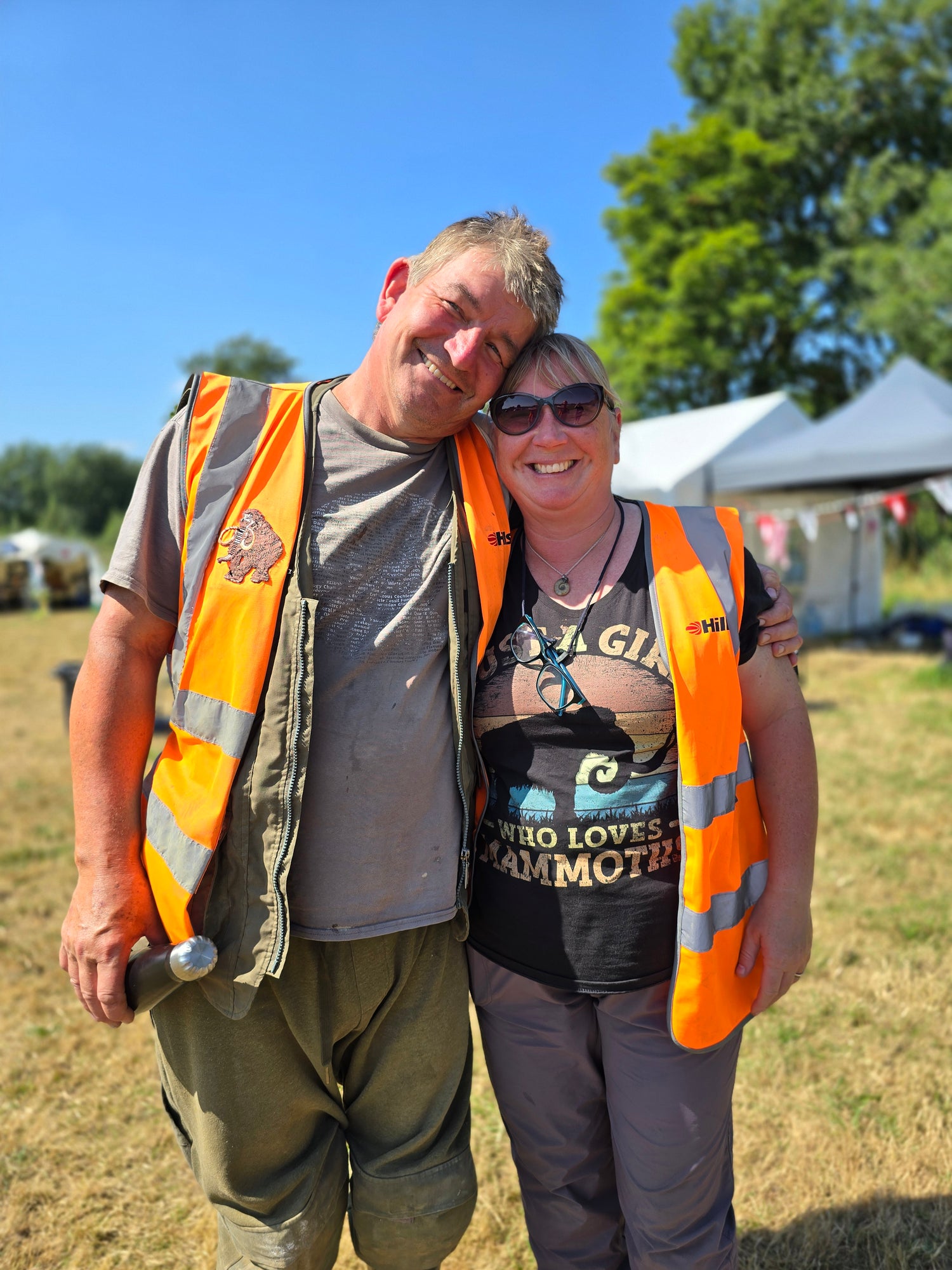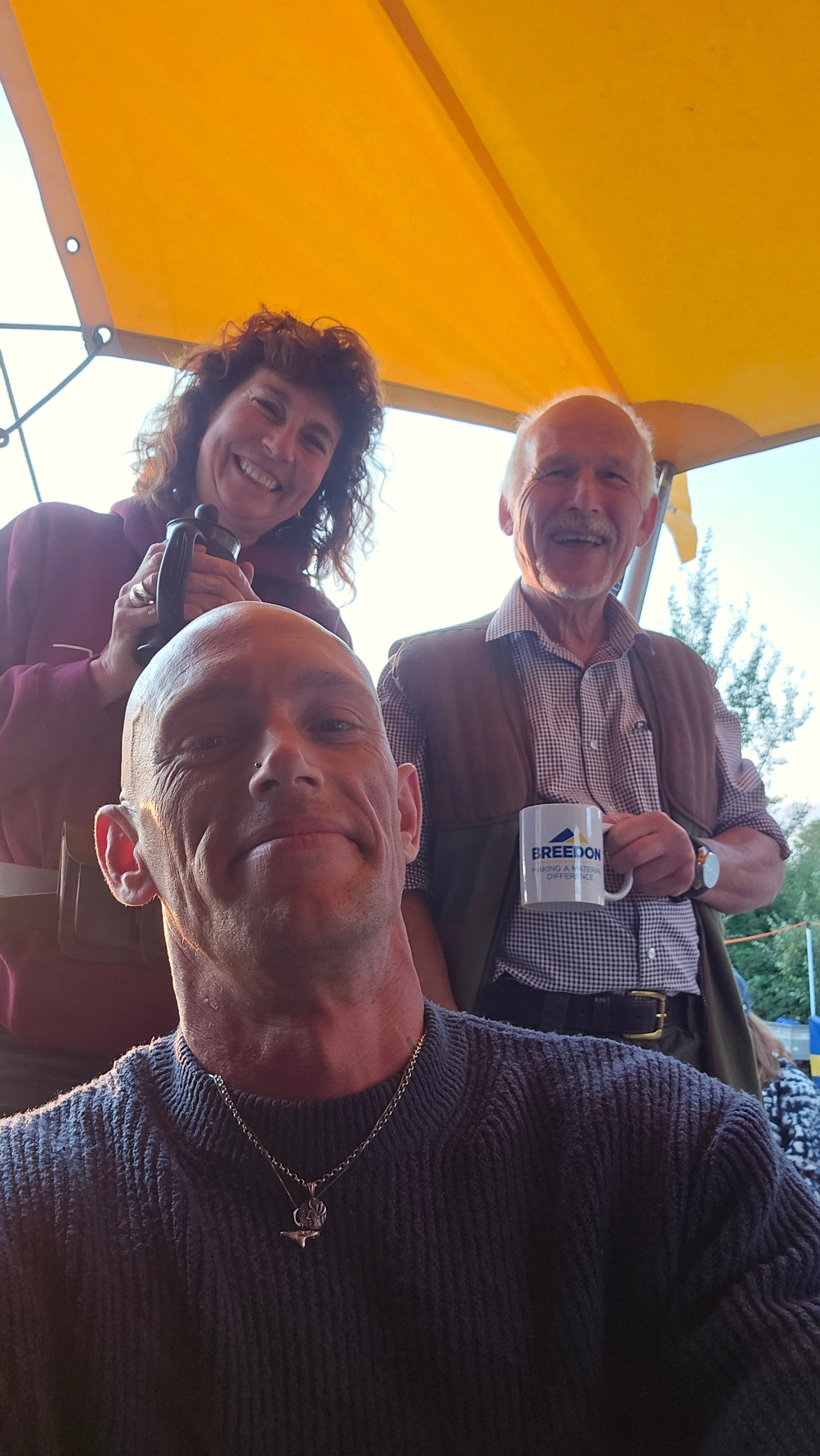Mammoth Dig 2024

The Mammoth Excavation 2024/25
The Cerney Wick site - located on the Wiltshire-Gloucestershire border - has revealed one of the most significant Middle Pleistocene fossil deposits in Britain. Active excavations between 2018 and 2024 have brought to light the remains of several mammoths, Neanderthal tools, and a diverse array of ancient fauna, all preserved within a former river channel.
Key Discoveries
The palaeochannel deposits at the site contain the remains of at least five steppe mammoths (Mammuthus trogontherii) - two adults, two juveniles, and one calf. These fossils are stratigraphically associated with Neanderthal stone tools, including a handaxe and flint flakes, providing compelling evidence for human–megafauna interaction in Britain long before the last glacial maximum.
Alongside mammoths, the team recovered remains of bison, straight-tusked elephant, shark fin cartilage, molluscs, beetles, and even marine reptiles such as plesiosaurs and crocodiles form the Jurassic deposits. These finds reflect the site's exceptional preservation conditions and the varied environments that once characterised the region.
Scientific Analysis
OSL (Optically Stimulated Luminescence) dating of the sediment confirms the age of aeround 215 000 years.
Pollen, insect, and mollusc analyses reconstruct an open, treeless grassland, indicating the site represents a low-energy floodplain system that captured and preserved megafaunal remains over time.
The presence of artefacts within the same stratigraphic unit as the mammoth bones suggests that Neanderthals may have processed or scavenged carcasses at this location.
2024 Findings & Public Exhibition
In 2024, new discoveries included a straight-tusked elephant tooth, additional Neanderthal tools, and rare marine vertebrates. These finds will be displayed at the Corinium Museum in Cirencester in 2025. Notably, the fossil material continues to be prepared and studied under the guidance of academic institutions, including the University of Winchester and the Natural History Museum.
Mammoth Dig 2024
-

The wonderful Sally and Nev
Every excavation has its backbone - the dependable people who keep the work steady, the energy right, and the standards high. Sally and Nev were exactly that. Whether it was logging finds, keeping spirits up in the rain, or digging in shoulder to shoulder, they brought experience and calm to the chaos of a live site. You could trust them with anything - from a delicate jacket to a decision on trench depth. It wasn’t just their skill that stood out, but their quiet dedication and care for the process. The mammoth may have been the headline, but people like Sally and Nev made the work behind it possible
-

Sieving Team
Some of the most important finds come from what’s nearly missed. As team leader for sieving in 2024, I oversaw the careful sorting of every bucket of sediment removed from the mammoth trench -material that others might discard. From tiny bone fragments to plant matter and microfauna, sieving was about patience, sharp eyes, and teamwork. We worked in shifts, often soaked through and covered in clay, but the moments when something rare appeared in the mesh made it all worth it. This part of the excavation was quieter, more meticulous - but no less vital to the story we were uncovering
-

Charles Spencer, 9th Earl Spencer
We were joined on site by Charles Spencer, 9th Earl Spencer - author, historian, and brother to Princess Diana. He spent time with the team, asking thoughtful questions, and took a genuine interest in the process and significance of the dig. We spoke about the importance of preserving these moments in time.
-

Conservation tent selfie
Steven Zhang, Nigel Larkin, Alison Park, Oliver Weeks, and myself. Captured after examining some of the bones emerging from the excavation. It was one of those spontaneous moments, gathered around a promising find, discussing preservation, species ID, and what it might tell us about the Ice Age landscape we were uncovering.
-

Escaping the heat of the day
Escaping the heat with Richard Forrest. Mammoth HQ was a lovely shaded retreat from the heat of the pit. With regular breaks and plenty of water and food, we kept spirits high and energy steady, sharing finds, stories, and the occasional theory about what lay deeper
-

Morning group photo
Each morning we would gather for our group photo, a daily tradition that quickly became part of the rhythm of the excavation. It captured not just the team, but the constant flow of new and returning volunteers—faces changing day by day, yet all contributing to the same shared goal.
Attenborough and the Mammoth Graveyard
Mammoth 2.1 Ep.1 (palaeotube)
Mammoth 2.1 Ep.2 (palaeotube)

Mammoth Dig 2025
My time on the 2025 mammoth excavation, though short this year, left an indelible mark. The three days spent setting up were not only productive but also a joy - camp safety, layout, the logistics of tents and marquees all seamlessly and impressively handled. On my first dig day, I found myself scraping around a mammoth skull alongside Nigel Larkin, the highly respected natural‑history conservator known for his exceptional skills in fossil preparation, excavation, and curation
Returning home for the day, I spent around eight consecutive days leading walks with some 60 eager participants for the Lyme Regis Museum - then raced back to the site. While I was back, I smashed through Kellaways (a Jurassic formation rich in fossil content), exploring the earth’s layers.
The day before I departed, I found some organic material that had been compressed under gravel for approximately 215,000 years. As someone who’s often introverted, I found clarity and purpose in focusing deeply on that one thing in the field. The moment I did, a family matter called me home the following day, but it wasn’t disappointing - it was simply a privilege to have spent even a short time with such a dedicated team on such a meaningful dig.
Mammoth Dig 2025
-

Dr Steve Etches visit was celebrated by everyone.
-

Separating some organic material
-

Morning Group Photo
-

Set up day! Woohoo
-

The wonderful Sally Poyton
-

Digging in the pit with the legend Nigel Larkin
Cerney Wick Mammoth Excavation 2025
In summer 2025, Cerney Wick hosted one of the largest palaeontological excavations in the UK. The site contains a buried river channel dating back over 200,000 years, that cut trough a much older Jurassic deposit..
The excavation brought together over 200 volunteers, students, and researchers from across the country. Over a three-week period, they worked in challenging conditions to expose and record material from the Pleistocene deposits, with support from Hills Quarry Products, who provided access, water management, and logistical assistance.
The season’s finds included a mammoth skull in remarkable condition, a large bull mammoth tusk, and bones from mammoth, bison, rhinoceros, giant horse, and deer. Smaller but still significant discoveries included the remains of a young mammoth.
Jurassic layers yielded marine material, including part of a plesiosaur bone, ammonites, and molluscs. All finds were carefully recorded, photographed, and prepared for further study.
The excavation was led in the field by Sally and Dr Neville Hollingworth. Their coordination, alongside a large and diverse volunteer team, ensured that material was recovered efficiently and documented to professional standards.
Work on the finds will probably continue for many years, contributing to a better understanding of Ice Age environments in the Upper Thames Valley.











